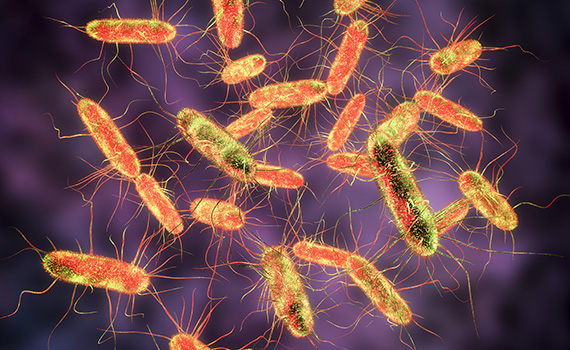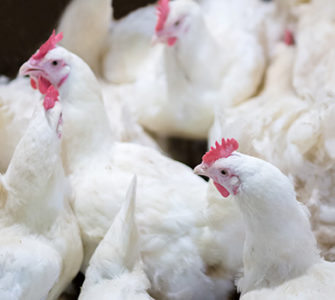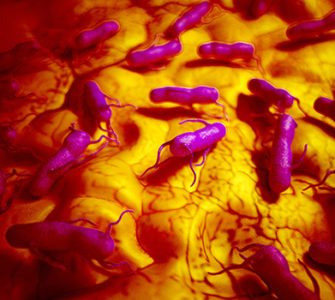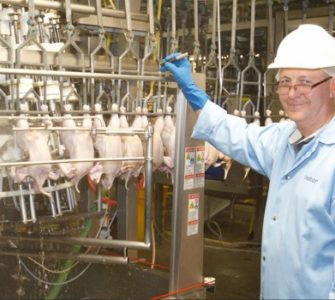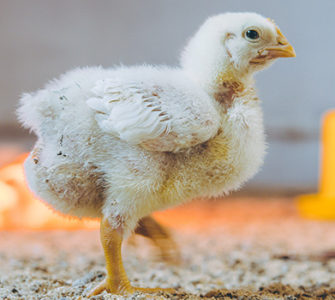Live Salmonella vaccines, some DFMs may not mix
By Philip A. Stayer, DVM, MS, ACPV
Corporate Veterinarian
Sanderson Farms, Inc.
Two interventions aimed at controlling Salmonella during live production are the use of live Salmonella vaccines and direct-fed microbials (DFMs). DFMs would include competitive exclusion products and probiotics. Both interventions are among those recommended in draft guidelines from USDA’s Food Safety and Inspection Service.1
In the US, there are two licensed, modified-live Salmonella Typhimurium vaccines for use in poultry. One of them does not persist in the chicken or the environment. Since they were licensed by USDA, they have demonstrated efficacy against the pathogens listed on their labels. Both vaccines have claims against wild strain S. Typhimurium, Salmonella Enteritidis and Salmonella Heidelberg, and both are supposed to be given in the hatchery, followed by another dose at 14 days of age.
DFMs — innocuous or not?
Many of the DFMs for poultry are backed by published research demonstrating their ability to help contain Salmonella colonization. All DFMs are composed of innocuous, generally recognized as safe bacteria that potentially can displace pathogenic bacteria, including strains of Salmonella that can lead to foodborne illness in humans.
What may not be widely recognized, however, is that not all DFMs mix well with live Salmonella vaccines. Say that chicks have received a live Salmonella vaccine at the hatchery, and they are started on a DFM at the same time or perhaps on the day they are placed on the farm. If DFMs work on hardy, wild Salmonella spp. strains, they probably also work on less hardy vaccine strains.
Not all commercial DFMs have the same bacterial strains. Some may contain only dormant forms of spore-forming species. Dormant spores have to “awaken” into vegetative forms and may not inhabit the intestinal tract until after the live Salmonella vaccines have replicated and initiated immunity. It may be that some DFMs with active cultures could potentially inhibit all Salmonella and hinder or even destroy the Salmonella vaccine’s efficacy.
Quick test
I strongly advise producers and their veterinarians to question DFM and live-vaccine manufacturers about this possible negative interaction. If they don’t have an answer, there’s a quick test that can be conducted.
The first step is to inoculate the crop of day-old broilers with the live Salmonella vaccine used. I’d say 20 chicks would suffice. Administer the DFM-blended feed or DFM-treated water as recommended on the same day to 10 of the chicks but not to the remaining 10. After the vaccine has had time to colonize — around 3 days after administration — isolate the Salmonella vaccine strain from both groups, perhaps with help from the vaccine manufacturer or perhaps a regional diagnostic laboratory.
If the vaccine can be isolated at the same rate from vaccinated chicks that did and did not receive a DFM, the DFM is not interfering with the Salmonella vaccine. Of course, if the rate of Salmonella isolated is lower in the group that received the DFM, then it may be necessary to change the DFM used or delay the time the DFM is administered.
Some DFM and live Salmonella vaccine combinations may produce perfectly acceptable results while others may be problematic. However, just applying “the letter of the law”— that is following all USDA recommendations and, specifically, the simultaneous application of a modified-live Salmonella vaccine and a DFM — may not get us to where we want to be, which is the reduction of foodborne Salmonella pathogens.
Editor’s note: The opinions and advice presented in this article belong to the author and, as such, are presented here as points of view, not specific recommendations by Poultry Health Today.
1 DRAFT FSIS Compliance Guidelines for Controlling Salmonella and Campylobacter in Raw Poultry. December 2015.
Posted on July 20, 2020



